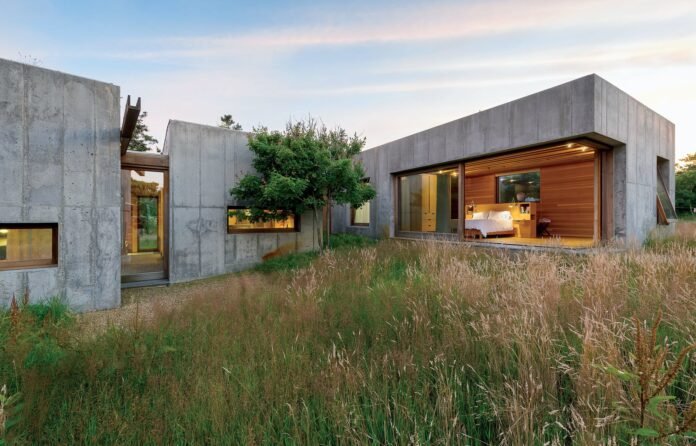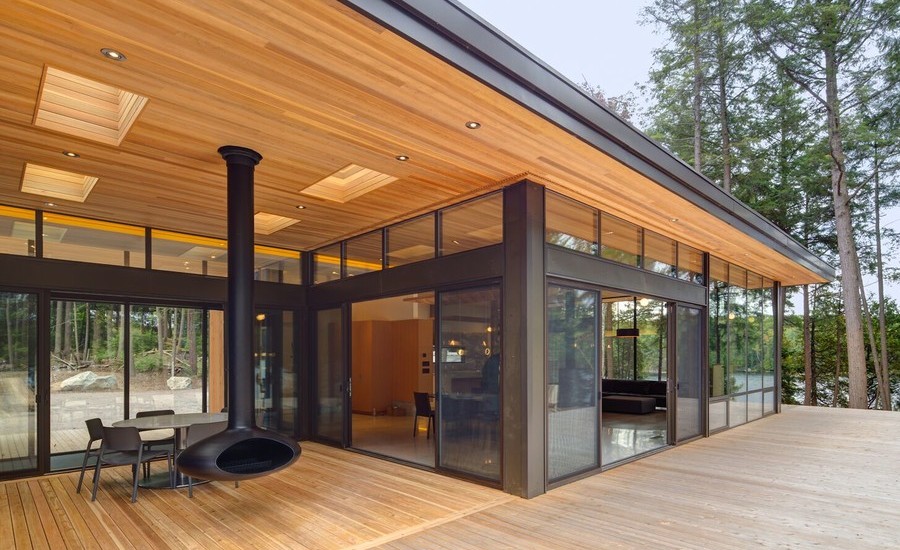When you think of concrete homes you may think of dreary high-rise flats buildings that are an eyesore. Nowadays, cement has come a long way in the construction industry and is used to make aesthetically pleasing versatile eco-friendly homes. Beautiful homes completely made of concrete are constantly pushing the boundaries with design and uniqueness. It’s still the most widely used building material in the world and can be sourced locally from pretty much anywhere across the globe.
How Buildings are Made with Concrete
Concrete is made up of cement, stones, sand, and water mixed with prefabricated steel reinforcement when building a new home to give it support. Different types of concrete are used dependent on the building. These include blocks of concrete, panels that have been precast, insulating concrete forms, and removable forms.
The most aesthetically pleasing of these is the precast panels, but they will generally be more expensive. They can be used to make custom-built homes that will be delivered readymade, allowing a quick build.
Benefits of Building with Concrete
Concrete is the most used material in building sites for many reasons. These include;
- Easy to build. Concrete blocks are used for buildings and they offer a simple and quick way to develop any structure.
- Weather-resistant. Concrete won’t mould or dampen in even the most humid conditions.
- A much more affordable option than wood, for example.
- Fire-resistant.
- No issues with woodlice or any other insects and rodents aren’t able to gnaw through concrete, unlike other materials.
- Low maintenance and long-lasting. Concrete will last decades longer than other building materials and increases in strength over time.
Environmental Impact of Using Concrete
Concrete has many positive attributes when it comes to reducing our carbon footprint.
- Maintains heat in the home. Concrete keeps our homes more energy-efficient as it keeps the warm air inside, resulting in people using less heating.
- Completely recyclable. Concrete can be reused time and time again, unlike other building materials.
- Sound and vibration. These are kept at a minimum, if not blocked out completely. This is particularly beneficial when building homes in cities.
- You can find the materials to make concrete all over the world that saves builders having to import material from other places, therefore, lowering the carbon footprint.
Stylish
The versatile characteristic of concrete means it can be used to make amazing structures that are very pleasant to look at. Some homes even have concrete entirely throughout their house, including the kitchen worktop.
Architects and builders have got very creative with concrete as it’s easy to sculpt different shapes, allowing them to build homes that would otherwise be much more difficult to put together. The low-cost and ease to do this allow them to experiment and see what works and what doesn’t.
You don’t need to have the concrete visible from the exterior if you want it to be more aesthetically pleasing. There are plenty of options available to cover the cement, including shingle fibre, wood siding, and veneer made from brick and mortar. These can transform your home into something completely different while still getting the benefits from concrete.
Financially it Makes Sense
Concrete is long-lasting and low maintenance and is cheaper to build with than many other materials. The reduction in heating usage means you will save money in the long run on bills whilst reducing your carbon footprint.
Insurance companies are known to have lower rates for buildings that are made of concrete due to their fire and water resistance, low maintenance requirements, and insect-proof qualities.




















